Stainless steel welded pipes are steadily replacing seamless pipes in various industrial applications, particularly in heat exchangers, boilers, and superheaters. Their superior cost efficiency, improved welding technology, and enhanced performance have made them the preferred choice for industrial heat exchange systems. While seamless pipes are still used in some applications, welded pipes now dominate due to their higher production efficiency, lower costs, and technological advancements.
At present, with the rapid development of my country's economic construction, the consumption of stainless steel pipes is increasing, and the demand for stainless steel pipes is also increasing, and the market prospects are promising. However, at present, there is a certain gap between domestic stainless steel pipes and market demand in terms of variety, specification, quantity, quality, etc. In terms of variety, domestic stainless steel seamless pipes are still mainly 1Gr18Ni9Ti that has been eliminated abroad, and the quality of domestic urea-grade and high-precision stainless steel is still difficult to guarantee; heat exchanger tubes for power station boilers and urea tubes for fertilizer devices are mainly imported; duplex stainless steel pipes with good corrosion resistance are rarely produced domestically. In terms of product specifications, there is a large gap in large-diameter, high-requirement stainless steel pipes and extra-long pipes; the production capacity of small and medium-diameter stainless steel pipes for general use is greater than market demand. In terms of product quantity, higher-standard industrial welded pipes, especially high-requirement industrial pipes, are basically blank, the output of ordinary stainless steel pipes is balanced with the overall market demand, the production capacity of ordinary seamless pipes is in excess, and the market supply of medium and low-grade standard stainless steel decorative welded pipes exceeds demand.
In the past decade, with the rapid expansion of application areas, the domestic demand for stainless steel pipes of different materials, specifications, varieties and uses has soared; coupled with the attraction of high added value of stainless steel pipes, the number of enterprises producing stainless steel pipes has grown from a dozen in the 1980s to more than 400 at present, with a comprehensive production and processing capacity of more than 1 million tons, and the actual output has increased from 50,000 tons in 1989 to 390,000 tons in 1999; there are very few enterprises with an output of 5,000 tons, most of which are small factories with an annual output of less than 1,000 tons. The steel grades have developed from single austenite to martensitic and ferritic dual-phase steel and high-alloy steel; the product varieties include seamless steel pipes including cold-drawn pipes, cold-rolled pipes, hot-extruded pipes, centrifugal casting pipes, and spinning pipes; welded pipes include: plasma welding, argon arc welding, submerged arc welding, light speed welding and high-frequency welding, etc. The stainless steel pipes that can be produced basically cover the varieties and specifications of the standards of various countries in the world, and the specifications and varieties of stainless steel special-shaped pipes are more than 100 kinds, and the product uses involve many fields such as industry and civil use. The output of stainless steel welded pipes in some developed countries in the world accounts for 65% to 75% of the total output of stainless steel pipes. The production capacity of stainless steel welded pipes in my country is not in line with the domestic market demand. It is predicted that in the 21st century, the annual demand for stainless steel welded pipes in the domestic market will be at least 60,000 tons, which needs to be supplemented by imported products.
Domestic stainless steel welded pipe production mainly adopts continuous forming units and UOE methods. The welding methods are all inert gas shielded welding and continuous forming units. In the process of producing thin-walled steel pipes, single-gun welding is generally configured. The production of industrial pipes with a wall thickness of 2-3.2 mm also has 3-4 guns for welding, and one-gun plasma plus three-gun argon arc welding and other welding methods are also required. Due to the high-energy plasma's deep melting ability. For steel pipes with a wall thickness of less than 6 mm, plasma welding and single-sided welding and double-sided forming have been used. The UOE method is mainly used to produce large-diameter, thick-walled stainless steel pipes, generally using plasma welding and argon arc welding. Now, China can produce high-quality stainless steel welded pipes for industrial use, and the welds on the inner and outer surfaces of the steel pipes are smoothed. Make the weld have the same performance as the parent material. In order to ensure the quality of industrial pipes, advanced technologies such as weld tracking and post-weld finishing rolling have been adopted. At present, domestically produced stainless steel pipes are generally still processed offline. Most of the heat treatment furnaces for stainless steel pipe heat treatment are gas-fired and continuous roller-hearth furnaces. In addition, there is an electric heating continuous roller-hearth furnace, three oil-fired continuous roller-hearth furnaces, and two box furnaces.
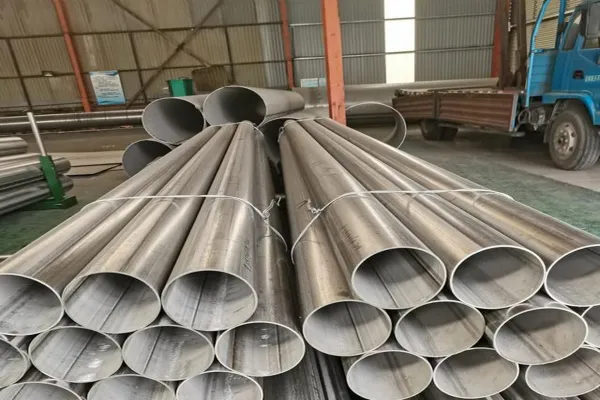
Advancements in Welding Technology
The welding technology of stainless steel pipes has improved significantly, ensuring better joint strength and durability. Traditional welding methods like argon arc welding, plasma welding, and combined welding have been enhanced to produce higher-quality welded pipes. These advancements allow stainless steel welded pipes to match, and in some cases surpass, seamless pipes in structural integrity and corrosion resistance. As a result, welded pipes are now widely used in heat exchangers, boilers, and superheaters, replacing seamless pipes in many industrial settings.
Cost Efficiency and High Production Output
One of the biggest advantages of stainless steel welded pipes over seamless pipes is their cost-effectiveness. Producing seamless pipes involves heating stainless steel billets at high temperatures and then perforating them, which is both energy-intensive and expensive. In contrast, welded pipes are manufactured by forming stainless steel sheets into cylindrical shapes and welding the seam, significantly reducing production costs. On average, stainless steel welded pipes are about 20% cheaper than seamless pipes.
Additionally, welded pipes allow for higher production efficiency. The welding process is easier to control, resulting in a more uniform surface and precise dimensions. This makes welded pipes ideal for mass production, offering a faster and more economical solution for industries that require large-scale manufacturing.
Growing Demand in Industrial Applications
The demand for stainless steel welded pipes has been rising steadily, driven by their advantages in performance and cost. Industries such as power generation, chemical processing, and construction increasingly favor welded pipes over seamless ones. Their ability to withstand high temperatures, pressure, and corrosive environments makes them suitable for critical applications in heat exchangers and boilers.
Moreover, as industries seek more sustainable and cost-efficient production methods, stainless steel welded pipes are becoming the preferred choice. Their ease of manufacturing, lower material waste, and affordability make them a practical solution for industrial piping needs.
Conclusion
With continuous improvements in welding technology and production efficiency, stainless steel welded pipes are rapidly replacing seamless pipes in various industrial applications. Their lower cost, high-quality welds, and reliable performance make them an ideal alternative for industries looking to optimize costs without compromising durability. As the demand for efficient and cost-effective piping solutions continues to grow, stainless steel welded pipes are set to play a dominant role in the future of industrial piping.






 English
English Español
Español بالعربية
بالعربية

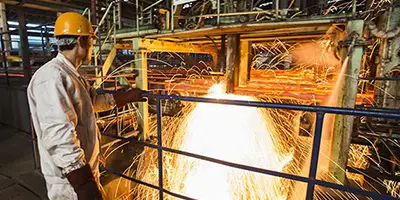
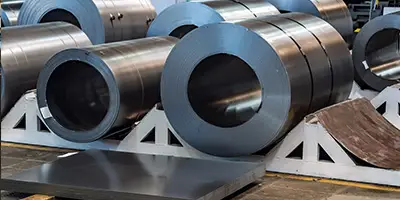

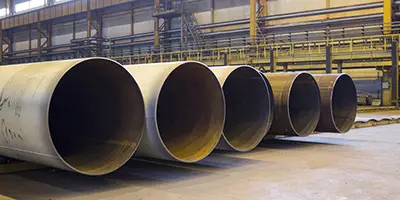
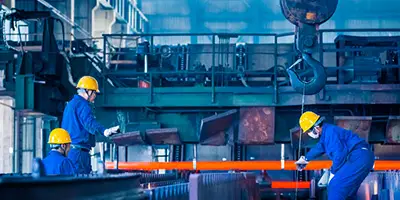
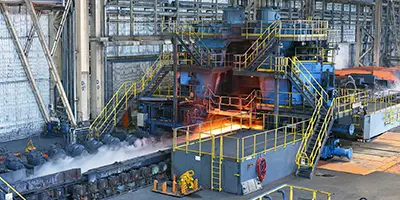




 Phone :
Phone :  Whatsapp :
Whatsapp :  Email :
Email : 


